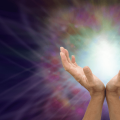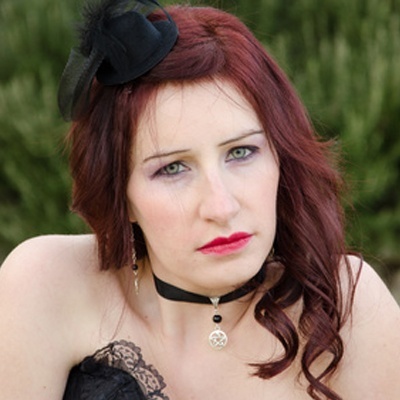Table of Contents
The origination of paganism predates modern civilization. In fact, it is deeply connected with ancient civilizations, with many people believing that paganism today is merely a modern form of ancient worship. Keeping these ideas in mind, our study of paganism would be incomplete without casting a look at its very roots: mythology.
Traces of Paganism can be found in almost every prominent mythology, including Greek, Roman, Egyptian, Norse, Canaan, Baltic, and Celtic mythologies. We need to look at each of these in turn to understand the essence of Pagans and how it has maintained its values over time despite undergoing monumental cultural evolution.
In the absence of Pagan sacred texts, mythological lore combined with historical findings has contributed to the knowledge we have of paganism today. The various pagan mythologies are repositioning themselves of information on gods and goddesses that the ancient pagans worshipped.
1. Greek Mythology
Paganism in ancient Greece was called Hellenic Paganism – a form of paganism that is still alive and active in the modern world. Hellenic paganism involves worshipping Olympians, nature divinities, underworld deities, and heroes. Before we look at these, let’s discuss the relationship between Ancient Greece and Paganism.
Ancient Greece and Paganism have been associated with each other for centuries. Paganism was a major religion in Greece until Emperor Theodosius I banned it in the fourth century – a ban that his successors enforced. Regardless, classical Greece is still considered the first home of paganism, and therefore Greek mythology is still considered an inseparable part of paganism.
And now, let’s turn to mythological aspects. Greek mythology has many gods, goddesses, and other entities that are considered divine by Hellenic Pagans even today. While most of the world incorporates these “characters” into art, movies, and literature, Hellenic Pagans consider mythological entities part of their daily lives, as they did in ancient Greece centuries ago. The gods and goddesses of Greek mythology were the supreme authority, and they had to be honored every day instead of being called upon only in the time of need.
Although there are plenty of celestial beings in Greek mythology that would serve as an interesting point of discussion to paganism, let’s limit ourselves to the most important members of the Greek pantheon for now. Zeus, who is the most important, will be discussed in the end, but keep in mind that in Greek mythology, he is the most crucial figure and more or less the ruler of all other entities.
Here is a list of the most important gods and goddesses in Greek mythology:
Aphrodite – Goddess of Love
Aphrodite is the goddess of love and romance in Greek mythology. She was born from the white sea foam produced by the severed genitals of Uranus. Although she’s primarily considered a divine figure of love, beauty, and fertility, she has also been honored as a goddess of the sea and war.
Ares – God of War
Ares is the god of war or the ‘spirit of battle.’ Hence, his significance in Greek mythology is emphasized in conflict and disputes. However, Ares is an unpopular god in Greek mythology given that he reflects the unlikable aspects of warfare and slaughter.
Artemis – Goddess of Hunt
Artemis has multiple attributes attached to her divinity, including the hunt, the safety of wild animals, vegetation, chastity, and childbirth. As a Pagan figure of worship, Artemis is usually connected to womanhood and female experiences such as puberty, labor, and motherhood.
Apollo – God of Healing
Apollo is the god of healing, medicine, archery, music, poetry, and the sun. He represents ideal virtues such as harmony, reason, moderation, and knowledge. He is an important mythological figure and has been referred to in literature and art countless times due to his power over such essential fields of humanity. He’s also Artemis’s twin brother.
Athena – Goddess of War
Although Athena is typically considered the warrior goddess in Greek mythology, she is also the city protectress, goddess of handicraft, and practical reason. The mythological account of her birth is that she sprang from Zeus’s head, full-grown and clothed in armor. She is also considered to be Zeus’s favorite child. Athena is a figure of intelligence that appears in the time of need for many Greek heroes such as Heracles and Odysseus. Unlike Ares, Athena represents the wisdom and strategy necessary to win wars. She is also one of the few virgin deities in Greek mythology and hence appeals to believers as a symbol of purity.
Hades – God of the Underworld
Hades is the god of the underworld and deals with everyone that has passed on. More or less, Hades represents death itself: he’s stern and pitiless, emitting a dark aura that mimics the shadows of the underworld, also known as the House of Hades in mythological texts. He rules the Furies, has a three-headed guard dog named Cerberus, and resides with his wife, Queen Persephone.
Hera – Goddess of Marriage
Hera is one of the first Greek goddesses. She is ultimately the leading woman in Greek mythology and represents the sanctity of marriage and domestic life. She is Zeus’s wife, maintains considerable power over the Greek pantheon. Despite what she represents, Hera is notorious for being jealous and vengeful. Greek gods and goddesses have been anthropomorphized to a large degree. In mythology, they are depicted to have human-like emotions and needs such as jealousy, love, lust, and greed.
Poseidon – God of Water
Poseidon is the god of the sea, earthquakes, and horses. Like the sea itself, Poseidon is known for his short-temper, mood fluctuations, and unforgiveness. He is one of the most powerful and feared gods in Greek mythology. Disputes between Poseidon and other gods are a recurring theme in most mythological texts.
Zeus – God of Sky
Zeus is the most powerful being in Greek mythology. He is the ruler of the skies and also of Olympus. Hades and Poseidon are his brothers, and they were all born from Kronos – the Titan god they overtook together. Zeus is the distributor of justice and law and is undoubtedly the most prominent figure of worship in Hellenic Paganism.
As mentioned earlier, we have only discussed the most important gods and goddesses here. There are many more like Eros, the god of lust who is the lovechild of Ares and Aphrodite, and Hades’s wife Persephone, the daughter of another goddess, Demeter.
However, the critical thing for us to remember is that each of these gods, goddesses, and beings find a place in the Pagan religion. Hellenic Pagans have been worshipping these divine figures since the beginning of time and allocate great significance to them through rituals and various celebrations.
2. Roman Mythology
Believe it or not, the gods and goddesses in Roman mythology are the same as the gods and goddesses in Greek mythology! They have the same roles, and the same values are associated with them.
However, they have different names. This is because Roman mythology essentially took Greek deities and assigned relevant Roman objects to them as names. This also means that Roman deities don’t have a specific appearance, whereas the Greeks did not shy away from giving their gods and goddesses genders, human traits, and physical representations. In essence, Roman deities are essentially Greek deities but with different names.
Aphrodite is Venus, Ares is Mars, Artemis is Diana, Athena is Minerva, Hades in Pluto, Hera is Juno, Poseidon is Neptune, and Zeus is Jupiter. Apollo is Apollo, which makes him the only deity who retains the same name in both mythologies.
Like the Greek deities, the Roman deities were also a daily part of the ancient Pagan religion and yield influence over certain Pagans to date.
3. Norse Mythology
Norse mythology is a collection of folklore and myths originating from the Northern Germanic people. Though there aren’t many written narratives of Norse mythology from before Europe was Christianized, texts such as the Prose Edda and Heimskringla contain myths assumed to be passed down from the ancient pre-Christian, Germanic people.
Most pagan mythology has considerable euhemerization, which means that mythological conceptions are treated as historical events. Gods and ancient humans are treated as magical and powerful beings. Norse mythology is rich with tales of deities, jötnar, and humans. Jötnar is a supernatural being that is not deities but not human.
The tree “Yggdrasil” is the center of the universe, around which exist the Nine Worlds. Various beings live in Yggdrasil – the perching hawk Veðrfölnir, the messenger squirrel Ratatoskr, carries messages from atop the tree to the bottom of the tree.
Norse mythology splits the universe into “nine worlds.” While the gods live in Asgard, ruled by Odin, humans live in Midgard. Dwarves and elves occupy the remaining worlds. Norse mythology has countless tales recounting how these beings move through the realms and interact with one another. The supreme Norse god Odin is often the protagonist of mythological texts.
Odin travels across different realms to acquire knowledge. Their son is “Baldr,” who goes to the realm “Helheim” after his death. Hel is a realm of the dead, contrasted by the realms “Valhalla” and “Fólkvangr.” Odin watches over the deceased along with the goddess Freyja. Other supernatural beings such as “dísir” and “valkyries” appear in Norse mythology. The dísir are spirits that either aided or punished Norse clans. Valkyries are entities that decide who lives and who dies in battle.
Ragnarok marks a great battle between the realms and causes the death of many deities such as Odin, Thor, Heimdallr, Loki, Týr, and Freyr. Like the original humans “Ask” and “Embla,” formed from wood, a new couple, “Líf” and “Lífþrasir,” will repopulate the world.
Here is a list of the most important gods and goddesses from Norse mythology:
1. Odin
Also known as the Allfather of the Aesir, Odin is the most powerful immortal in Norse mythology. He is the god of war, poetry, and magic.
2. Frigg
Frigg is the goddess of love, beauty, fate, and motherhood. She is the wife of Odin. Frigg has the ability to tell the future, though she is secretive about what she sees.
3. Balder
Balder is the god of purity, joy, and light. He was the son of Frigg and Odin. His death is caused by the god Loki.
4. Thor
Thor is the god of thunder. He is also the son of Odin. Thor notably wields a hammer called Mjöllnir.
5. Loki
Loki is the god of mischief and trickery. He can shape-shift and appears in many myths as various animals.
6. Freyr
Freyr is the god of fertility. He is the brother of the goddess Freyja.
7. Freyja
Freyja is the goddess of battle, death, and love. She is the sister of the god Freyr.
8. Heimdall
Heimdall is known as the; “White God” who guards the clans of Aesir. Heimdall is foretold; to be the last deity to die; at Ragnarok.
9. Hel
Hel is the goddess of Helheim, the underworld.
10. Váli
Váli is the god of vengeance and the son of Odin.
11. Vidar
Vidar is the son of Odin; and the giantess Gríðr. Vidar is the god of justice.
4. Canaanite Mythology
Canaanite mythology is a set of folklore and myths originating from the ancient Canaan pagans. Most of the information known about Canaanite mythology comes from excavated tablets from the ancient city of Ugarit in Syria. The tablets tell stories of gods and goddesses, their characteristics, their relationships, and their battles.
El is the most important god in the Canaanite pantheon of gods. El, his wife Asherah, and the god Baal are primary figures in Canaanite mythology. They rule over other more minor deities and humans. El resides at the edge of the universe, where the earthly and heavenly waters meet, the “source of two rivers.” Canaanite mythology describes El as a benevolent paternal god to the universe. Most of the deities in Canaanite mythology manifest in nature.
One of the most notable stories from the Ugarit tablets is the “Baal Cycle,” which is a set of myths retelling an incident surrounding Baal. In the stories, the god Baal fights with the god Yam and El awards him a palace upon defeating him. Baal, known as a prideful god, roars and challenges the god Mot to a duel. Mot defeats Baal, sending him to hell. Since Baal is the god of rain and storms, his absence causes a drought. To remedy the situation, the goddess Anat kills Mot and scatters his remains across the Universe.
Here is a list of the most important gods and goddesses in Canaanite mythology:
1. El
El is the god of creation. He is the supreme god and ruler of the universe. He is the husband of Asherah.
2. Asherah
Asherah is the goddess of fertility. She is also referred to as “Lady of the Sea.” She is the wife of El.
3. Baal
Baal, also known as Ba’al Hadad, is the god of thunder, storms, and rain. He is often referred to as the “king” of the gods. Baal’s most notable weapon is the “Driver and Chaser” he uses during battle.
4. Mot
Mot is the god of death.
5. Anat
Anat is the goddess; of strife and war. Anat is the mate of Baal; as well as his sister.
6. Yam
Yam is the god of the seas. He is often referred to as the “judge of the Nahar (river).”
7. Aglibol
Aglibol is the moon god.
8. Yahribol
Yahribol is the god of spring.
9. Mel
Mel is the god of vegetation.
10. Pidray
Pidray is the goddess of light. She is the daughter of Baal.
11. Arsay
Arsay is the goddess of the underworld. She is also the daughter of Baal.
12. Chemosh
Chemosh is the god of destruction.
13. Gad
Gad is the god of good fortune.
14. Ishat
Ishat is the goddess of fire.
15. Tallai
Tallai is the goddess of snow and winter. She is the third daughter of Baal.
5. Egyptian Mythology
Egyptian mythology is a set of folklore; and myths originating from ancient Egypt. This is due to the Egyptian belief in “maat,” a governing balancing force in nature.
Ancient Egyptians, like most pagans, anthropomorphized their gods, attributing to them human flaws and attributes. Egyptian gods and goddesses inhabited nature and the natural cycles within it.
According to Egyptian mythology, the god Geb manifests in the entire expanse of the earth. Above the earth in the sky, the goddess Nut. Inhabiting the space between Geb and Nut is the air god Shu. Also, beyond the ordered universe lies a vast expanse of disordered water represented by the god Nun. Ra, the god of the sun, rises and moves across.
Nut every day. Ra sets in Duat, a place which is located between Geb and Nun.
Here is a list of the most important gods and goddesses in Egyptian mythology:
1. Isis
Isis is believed to be the goddess of maternity. She is the wife of Osiris and extends maternal nurture to the dead as well as the living.
2. Osiris
Osiris is the god of the dead. He is the husband of Isis and the father of Horus.
3. Horus
Horus is the god of the sky; hunting, and war. Horus is the son of Isis; and Osiris.
4. Set
Set is the god of violence; and chaos. Set or Seth is often depicted; as having a snout-like face; and dog-like body in hieroglyphics.
5. Anubis
Anubis is the caretaker of the dead and funerals.
6. Ra
Ra is the god of the sun and order.
7. Nut
Nut is the goddess of the cosmos and astronomy.
8. Nephthys
Nephthys is the goddess of air. Along with Isis, she is the daughter of Geb and Nut.
9. Geb
Geb is the god of the earth.
10. Nun
Nun is the god of chaos and primeval waters.
11. Tefnut
Tefnut is the goddess of rain, moisture, and dew. She is the mother of Geb and Nut.
12. Shu
Shu is the god of air and wind. He is the brother and mate of Tefnut.
13. Atum
Atum is the creator god.
6. Celtic Mythology
Celtic mythology is folklore; and myths originating from the Celtic pagans. Celtic paganism was polytheistic; and the celts worshipped several gods and goddesses. Celtic mythology was possibly as diverse and elaborate; as other pagan mythologies, though much of it did not survive Christianization. Anything that we know about Celtic pagan mythology results from scarce accounts recorded during the middle ages.
Due to Roman invasions and outlawing pagan religious inscriptions, there are no surviving texts in the Celts’ ancient languages, such as Gaulish.
Among Goidelic languages, Irish mythology is the one most closely related to Celtic mythology.
7. Irish Mythology
Ancient Irish mythology survived in some parts during the middle ages. Tuatha Dé Danann and the Fomorians were supernatural races representing order and chaos, respectively. Irish pagans worshipped the pantheon of gods collectively called Tuatha Dé Danann.
Here is a list of the most important gods and goddesses in Irish mythology:
1. Lugh
Lugh is assumed; to be an iteration of the Celtic god Lugus. Lugh is the god of storms; and the sun. Lugh is also a skilled warrior. In mythology, ravens and lynxes are symbols of Lugh.
2. Dagda
Dagda is the god of agriculture and masculinity.
3. The Morrigan
The morrigan is a goddess of war.
4. Ana
Ana is the; goddess of nature.
5. Aengus
Aengus is the god of love, youth, and poetry. In Irish mythology, he is the son of Dagda and the goddess Bionn. Dagda enchanted the sun to stop moving for nine months when Bionn became pregnant and Aengus was born in a day.
6. Bionn
Often referred to as “Boann,” Bionn is the river goddess, thought to be the patron of the River Boyne in Ireland.
7. Belenos
Belenos or “Belenus” is the god of the sun.
8. Brigid
Brigid is the goddess of healing and the daughter of Dagda. In mythology, Brigid has many animal companions that guard her.
9. Camulos
Camulos is the god of war and is often associated with the Greek/Roman god “Ares/Mars.”
10. Cernunnos
Cernunnos is the god of wild animals, forests; and wealth. Cernunnos is depicted with a horned head; in mythology.
11. Ogmios
Ogmios is the god of the spoken word; and eloquence. Ogmios is the son of Dagda.
12. Epona
Epona is regarded as a protector goddess of horses and donkeys.
13. Grannus
Grannus is the god of hot springs.
14. Eriu/Eire
Eriu is regarded as the patron goddess of Ireland. After the Milesians fought and defeated the Tuatha Dé Danann, Eriu marched to the tribe to greet them in mythology. The Milesians then promised to name the land after her. The name “Ireland” originated from her name.
Surviving texts such as Lebor Gabála Érenn (“The Book of Invasions”) and Cath Maige Tuired “The Battle of Mag Tuireadh” retell stories about important battles between the supernatural races. These battle stories recount how the Tuatha Dé Danann fought over and settled on Irish land.
8. Surviving Gaulish Mythology
Classical and medieval texts that survived Christianization by the Romans recount some important deities vaguely.
Here is a list of the three known Celtic gods:
1. Teutates
Teutates are regarded as protector gods. Historians assume that every tribe had its own iteration of Teutates as a patron.
2. Esus
It is unclear what Esus is the god of, though he is associated primarily with life, death, and rebirth.
3. Taranis
Taranis, known as “the thunderer,” is the god of thunder.
9. Baltic Mythology
Baltic mythology is the mythology related to Ancient Baltic pagan faiths. Here is a list of the known gods and goddesses in Baltic mythology:
1. Dievas
Also known as Dyeus, Dievas is the god of the sky.
2. Dieva dēli
Also known as “Dievo sūneliai,” are the two sons of Dievas. They are also referred to as the “Divine Twins.” The divine twins are the protectors of pagan worshippers.
3. Saule
Saule is the sun goddess. Her name is also the Latvian and Lithuanian word for “Sun.”
4. Saules Meita
Saules Meita is the daughter of the sun goddess Saule.
Within the numerous pagan religions, there is an intriguing reservoir of history and mythology. Pagan mythology has a limitless amount of wisdom, guided by virtue and morality. If anything, pagan mythology is worth exploring solely for how entertaining and interesting ancient mythology is.






 I love to write books about alternative religion, occult, and spirituality. My books are written for everyone in an easy to read and understandable style.
I love to write books about alternative religion, occult, and spirituality. My books are written for everyone in an easy to read and understandable style.